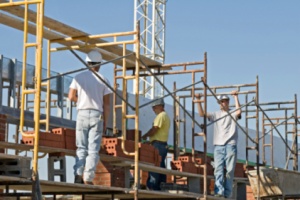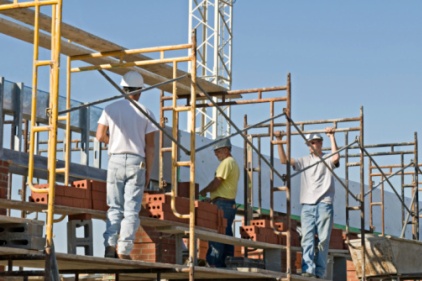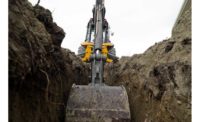 Three years after implementing the B-SAFE program on their first construction site, Jack Dennerlein and his research team are wrapping up data collection on their tenth and final site. The team has partnered with five Boston area general contractors to implement B-SAFE, a safety communication and recognition program aimed at improving safety performance on the construction worksite through novel feedback mechanisms.
Three years after implementing the B-SAFE program on their first construction site, Jack Dennerlein and his research team are wrapping up data collection on their tenth and final site. The team has partnered with five Boston area general contractors to implement B-SAFE, a safety communication and recognition program aimed at improving safety performance on the construction worksite through novel feedback mechanisms.
Traditional incentive programs measure performance and provide rewards for reduced rates of reported injuries and illnesses. However, experts in the field – and OSHA – have expressed concern that this approach may reduce injury reporting instead of reducing actual injuries.
B-SAFE takes a more proactive approach, emphasizing hazard recognition and control, thereby improving safety. In B-SAFE, safety personnel record safe and unsafe physical working conditions and generate a safety performance score. The score provides a snapshot of safety performance before an incident occurs.
Centrally-located posters throughout the worksite track safety performance with displays of safety scores for the overall site and individual subcontractors active there, fostering a healthy competition to reduce hazards. Additionally, safety personnel provide detailed and relevant safety inspection reports to foremen every week and encourage the foremen to share the results with their crews.
Preliminary feedback has been encouraging:
“The key ingredient of this program is that it promotes teamwork.” – Site superintendent at a B-SAFE intervention site
“It [B-SAFE] created common ground between all of the trades.” – Worker at a B-SAFE intervention site
“There was a lot more talk about safety on this job, and they [workers] never used to talk about safety.” – Worker at a B-SAFE intervention site
The amount of survey data (more than 1,100 individuals surveyed and followed over time) has enabled the research team to document the movement of individuals on and off worksites, something previous researchers have been unable to quantify. Preliminary results show a consistent pattern across all worksites: approximately 50% of individuals on-site at the beginning of a given month will remain on-site at the beginning of the next month, 25% will remain at the end of the following month, and so on.
The research team is analyzing this data in more depth; however, early results indicate that these patterns are independent of the project’s phase or a worker’s trade.
Results
- On-site managers and employees attributed an increase in teamwork, safety awareness, and communication to the B-SAFE program.
- Construction industry partners have expressed interest in adopting the B-SAFE program for other worksites. The research team has developed an extensive B-SAFE program manual and is developing a dissemination strategy to promote wider use.
- Researchers have presented findings in five regional conference presentations, four poster presentations and a paper published in Safety Science.


